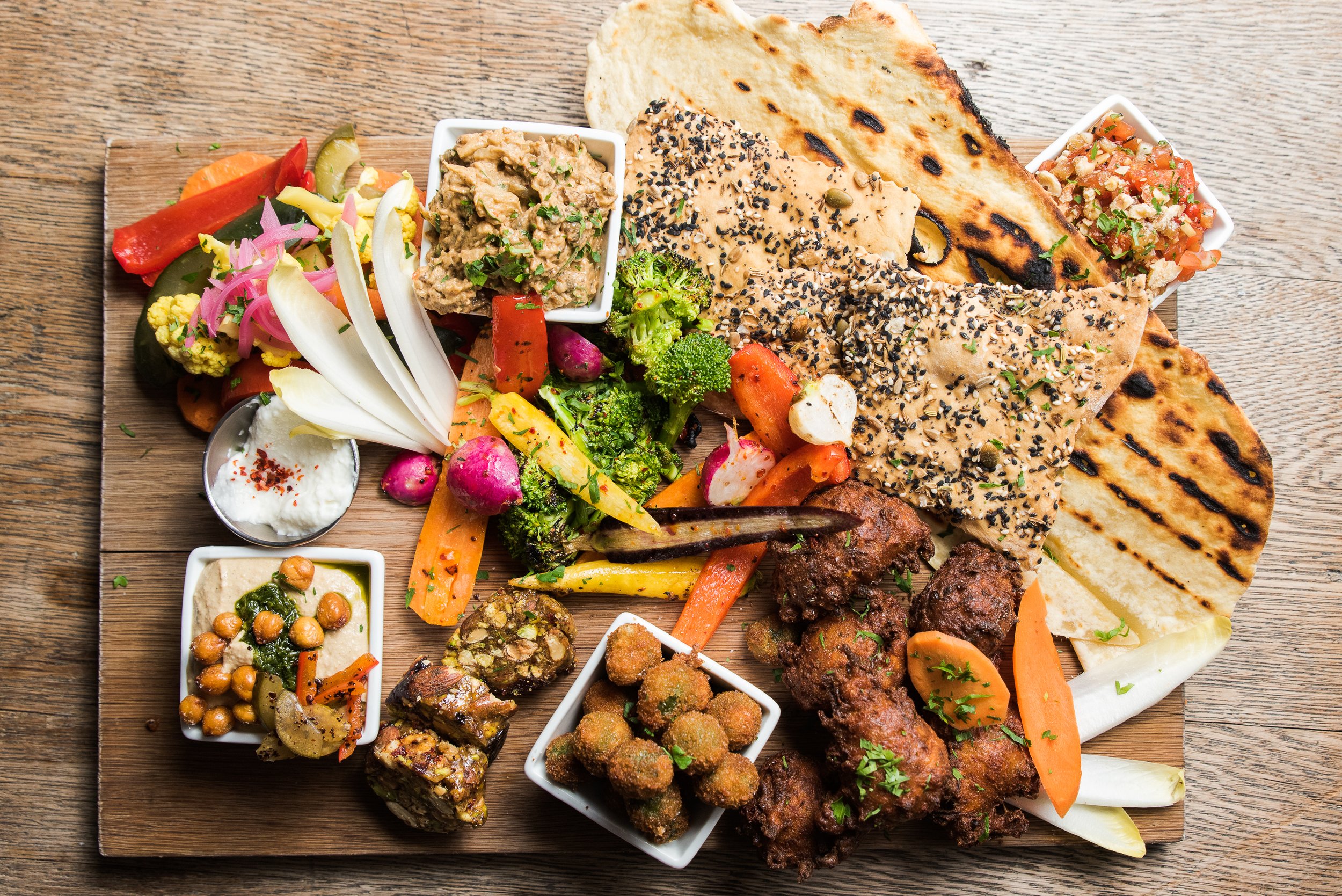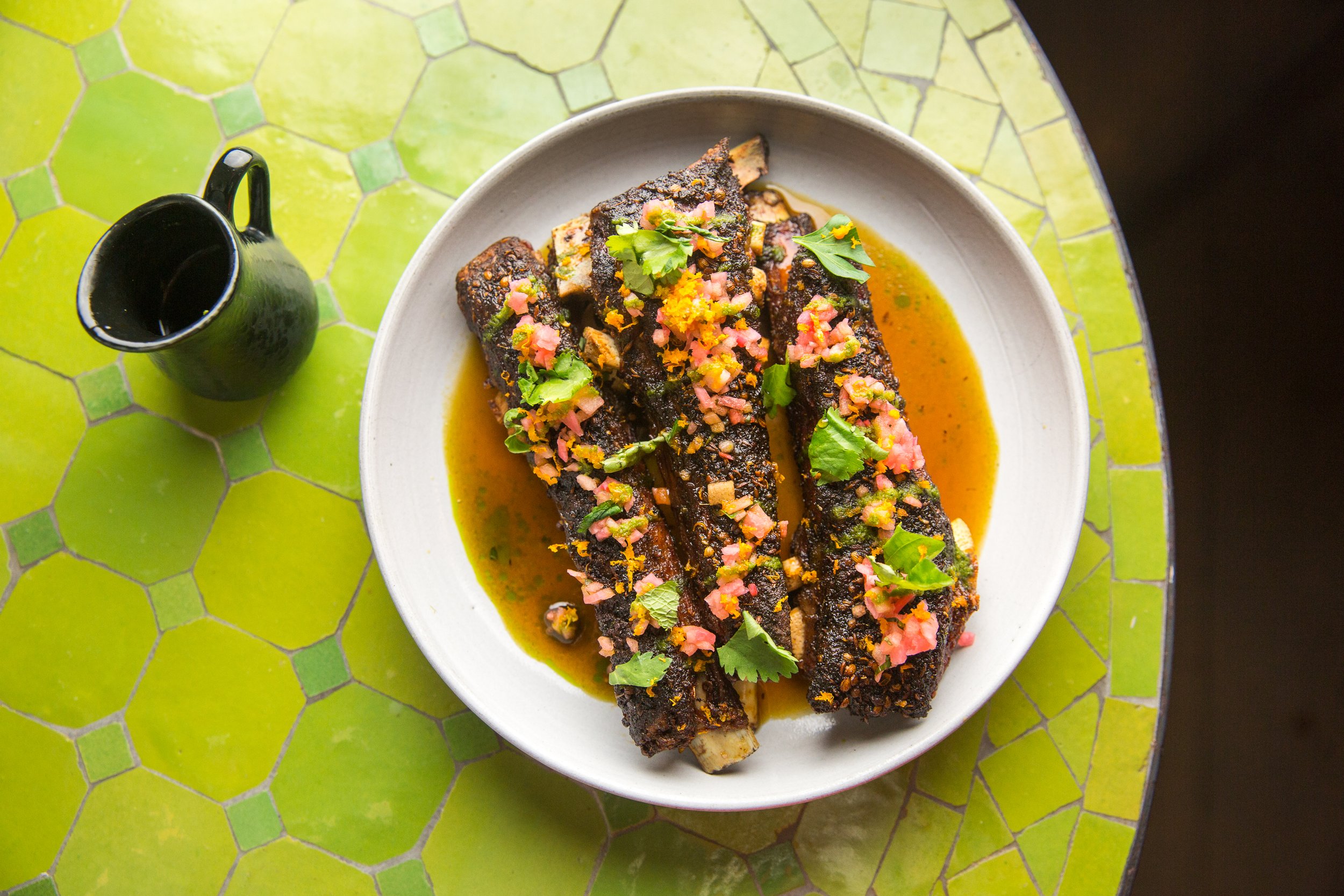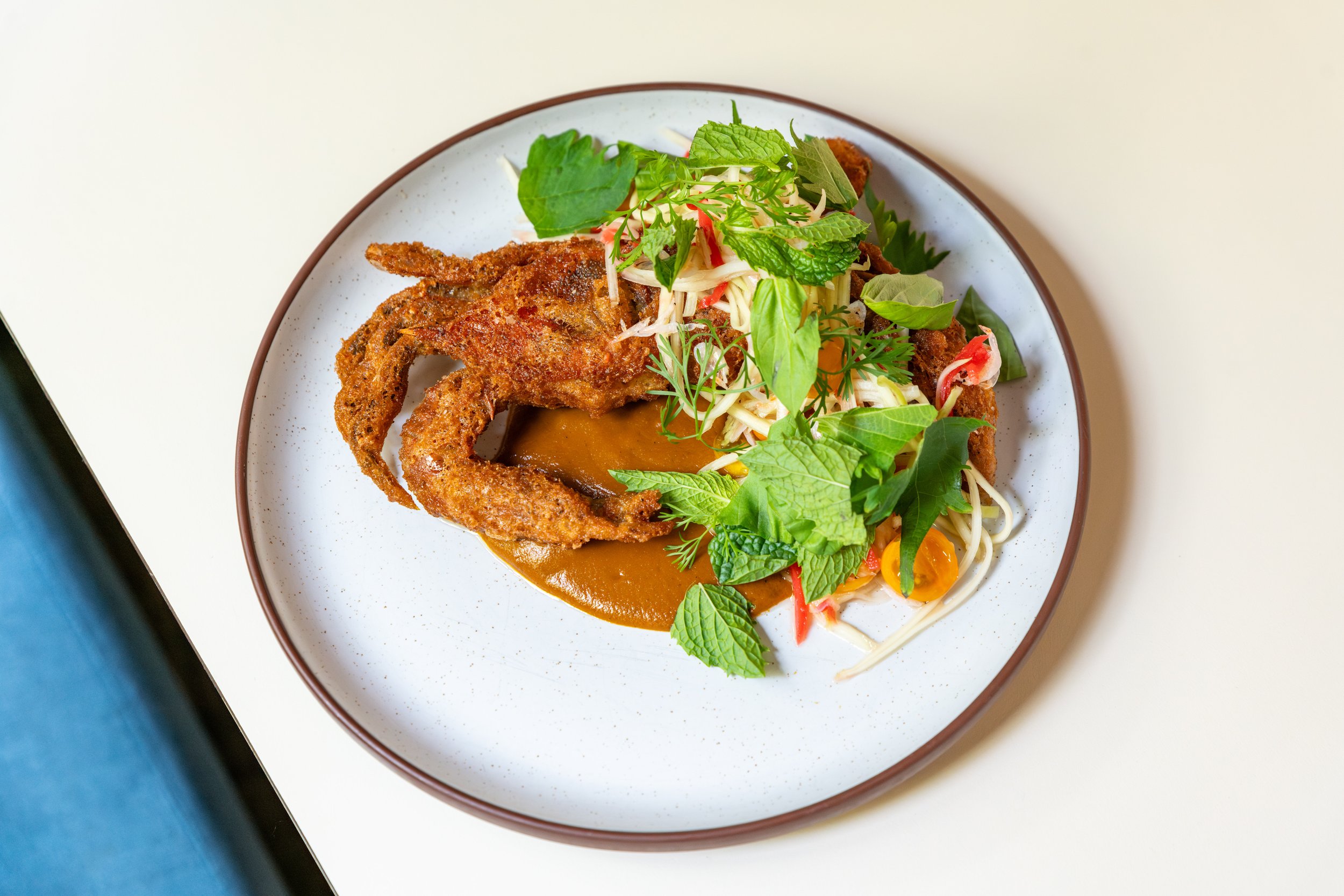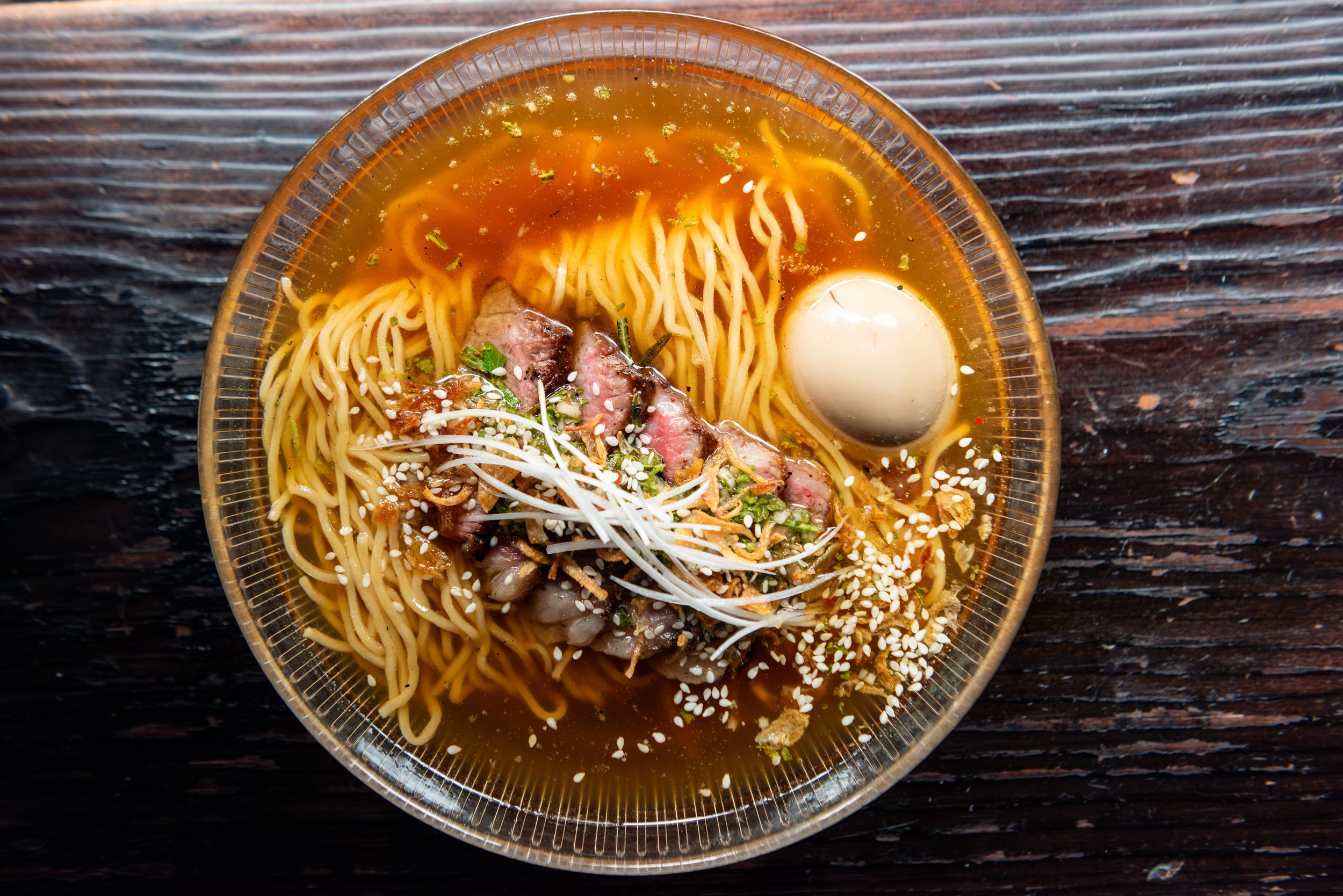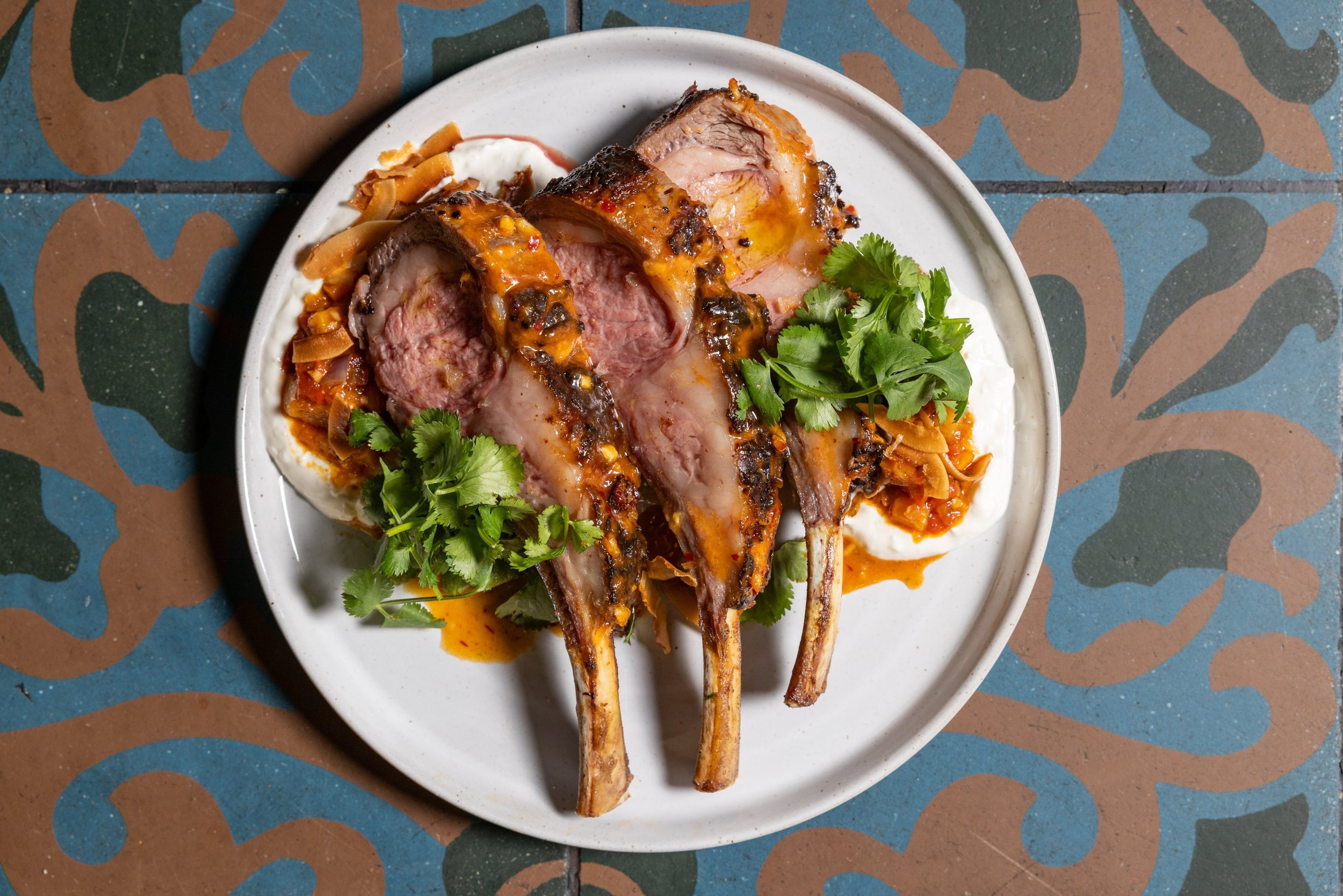The Solo Effect
We have Chef Michael Solomonov to thank for hummus and salatim.
Along with a few notable peers, Michael Solomonov and his first Israeli restaurant, Zahav, have inspired a wave of Middle Eastern restaurants across the country. He helped popularize tahini, hummus as a canvas, house pita, mezze, and pickles vis-a-vis salatim. As magnetic and soulful as his food, Solomonov is a cultural champion and mentor to a generation of cooks, and we’ve seen his influence in Italian restaurants in Denver, bright and breezy Pacific Northwest trendsetters, and San Francisco hotels. It’s the Solo Effect, and nowhere is it more evident than in his Philly homebase, where the dining public has fully embraced Middle Eastern and Israeli cooking.
Make My Shake Vegan
Oh, how the tahini floweth over at Goldie, where vegan shakes put dairy-based milkshakes to shame. Shame! Led by Chef Caitlin McMillan, Goldie is Solomonov and Steve Cook’s vegan-kosher falafel shop with three Philadelphia locations. In addition to falafel, fresh pita, salads, and loaded fries, they serve $5 shakes consisting of about 55 percent Soom tahini. The food costs might leave something to be desired, but the premium shakes have a light bitterness and ample protein that make them as satisfying as they are indulgent. “Tahini is pure fat. We just cream it with sugar and fluff it up before adding salt and wet ingredients—almond and soy milk—and then put it through a Taylor soft serve machine,” says McMillan, whose menu currently features original, mint chocolate, Turkish coffee, and banana shakes.
First Tahini, Now Silan
Launched in 2013, Philadelphia-based Soom Foods came along just as chef-driven Middle Eastern restaurants began to pop-up across the country. Solomonov was an early adopter of their Israeli produced tahini and uses it exclusively in his six CookNSolo concepts. In fall 2018, Soom introduced silan, a traditional date syrup, to their portfolio. A silky smooth sweetener made from 100 percent steamed dates, silan has less sugar than maple syrup, agave, or molasses, and Philadelphia chefs are beginning to add it to their pantries and dishes.
At Cadence, Rising Star Pastry Chef Samantha Kincaid uses silan to sweeten and season øllebrød (Danish rye bread porridge) and an Italian meringue for a dessert of frozen nougat, øllebrød, cranberry, and miso-beet cake. At Fork, Chef John Patterson fortifies a fig-red wine jus with silan to accompany a dish of grilled duck breast, duck confit and duxelle in brik, and Swiss chard.
Sweet AND Savory & Starts with a "K"
Kataifi , katifi , kanafeh, knafeh, kunafa, konafi : depending where you are in the Middle East or Mediterranean (or Philadelphia!), that’s how you spell a shredded, noodle-like phyllo dough associated with a dessert of the same name.
To add further confusion, the dessert can also be made with semolina dough (more on that later), and it doesn’t have to be a dessert at all. “Katifi always has cheese. It’s sweet, and you take the pastry, spread it across a pan, put cheese on top, crisp it up, and hit it with tons of syrup,” says Andrew Henshaw, chef de cuisine of Zahav. For his springtime menu, Henshaw riffed savory and made katifi with asparagus, Bulgarian feta, hawaji spice, and shiitakes. He fries the patties in clarified butter, bakes them off, and then pan sears them at pick-up for extra crunch. (His pastry counterpart Camille Cogswell makes “konafi ” with chocolate instead of cheese, so there really are no absolutes here.
Across town at Suraya, Pastry Chef James Matty sticks with a traditional Lebanese flavor profile but upends the format by using shredded dough on one side of the dessert and semolina on the other. “Phyllo has texture but no flavor, and semolina is great for flavor but doesn’t have a ton of crunch,” according to Suraya Chef Nick Kennedy. Matty layers house cheese in between the doughs, and tableside, servers pour rosewater syrup over top. Fried dough, cheese, chocolate, asparagus, rosewater. It all makes perfect sense when you dig in.
Middle Eastern-Style
2018 was a good year for Philadelphia diners with the opening of Spice Finch, Irwin’s, and Suraya—each of which lends its own voice and perspective to Middle Eastern dining.
Irwin's
After a career in real estate, Chef Paul Garberson got his industry start in catering, and every meal at Irwin’s feels like an intimate dinner party. Located upstairs at the Bok Building, you feel as if you’re in on a secret as soon as you arrive at the graffi ti-ed, low-lit dining room. Commence with a seriously generous mezze platter, and pass around small plates of lentil rice cakes with creamy eggplant and crispy sea bass with saffron rice.
Suraya
Coming from Beiruti siblings Nathalie Richan and Roland Kassis and Rising Stars Restaurateurs Nick Kennedy and Greg Root, Suraya is a 12,000-square-foot bakery, cafe, and restaurant dedicated to Lebanese cuisine. Traditional wood-fired cooking is central to the restaurant’s identity (don’t leave without eating pita and kebab!). Richan and Kassis’ mother helped workshop dishes, and they’ve recruited Middle Eastern immigrants to cook and add a layer of authenticity to the kitchen. But there are fine-dining touches, too, evident in dishes like Kennedy’s samke nayyeh: raw yellowtail, lemon, garlic, olive and herb oils, labneh, jalapeño, and fried cumin seeds.
Spice Finch
Chefs Jen Carroll and Billy Riddle take an expansive approach to Mediterranean cuisine at Spice Finch in the Warwick Hotel. The hummus is a whip of carrots and navy beans. Broccoli tabouleh eats like a hardy caesar salad, and the grape leaves are stuffed with farro, fennel, apricot, and lemon yogurt. Their food is healthy, accessible, delicious, and, ultimately, American—just spiked with Aleppo pepper and chermoula.




